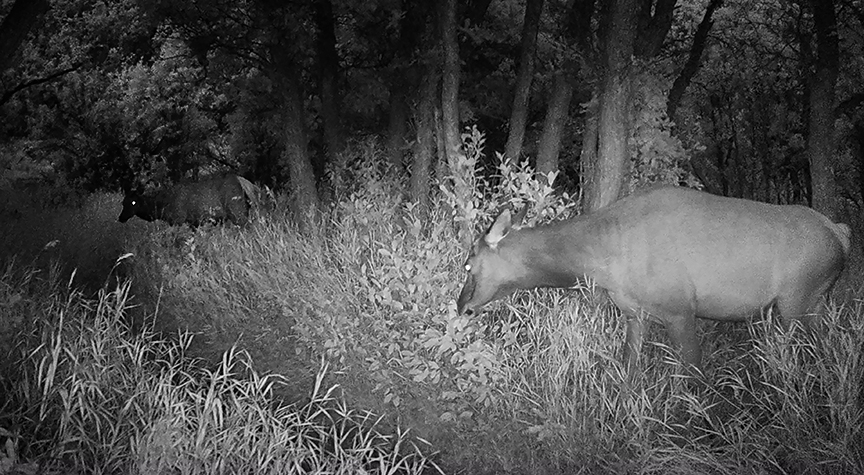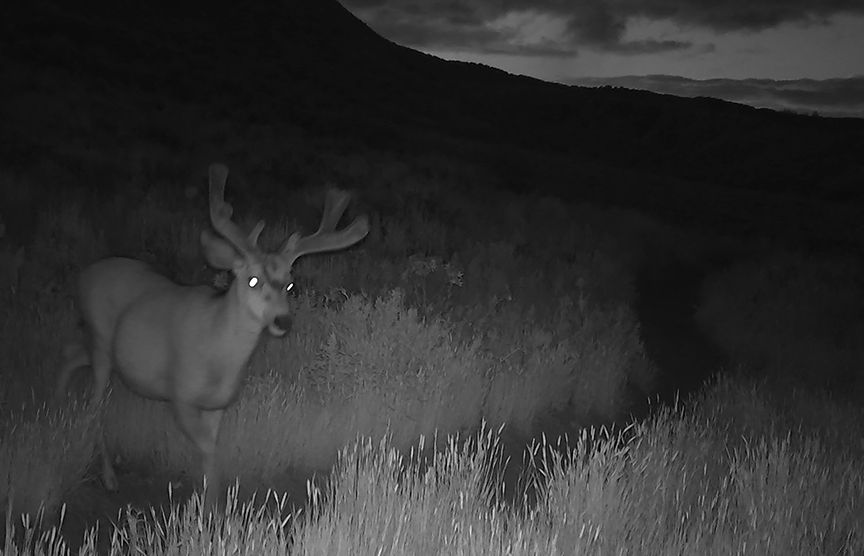Dusk to dawn belongs to the wildlife

Elk feed at Sky Mountain Park on a recent early morning.
Most winter closures on Pitkin County open spaces begin Dec. 1, but a different sort of closure impacts recreation each autumn, as the hours of daylight grow shorter.
Some open spaces are closed from dusk to dawn – a period that grows longer every day until the spring equinox next March. While winter closures provide season-long protection for wildlife, the nighttime closures are aimed at protecting species that are most active from dusk to dawn, giving animals the space they need to feed, hunt and move about freely without human interference.
Cats, including mountain lions and bobcats, are primarily nocturnal hunters, but crepuscular (occurring at twilight) animal activity also abounds on open spaces, documented by wildlife cameras. Autumn seems to bring an increase in wildlife sightings on trails, particularly during the early morning and evening hours.
Anyone walking around at 6 p.m. in early October is far more likely to encounter wildlife than they would at the same time in June, when dusk is still several hours away.
While ungulates such as deer, elk and moose are, by nature, most active at dawn and dusk, research into both the temporal (related to time) and spacial (related to space) displacement of wildlife in response to human activity shows that animals make adaptations to avoid humans.
The informal evidence collected by wildlife cameras at Sky Mountain Park confirms this finding. Elk, for example, will linger, undisturbed, in full view of a camera on Cozyline Trail during the park’s winter closure. They sometimes bed down on the trail for hours.
“There’s much more wildlife activity within closures than in other places in the middle of winter,” according to Jonathan Lowsky, wildlife biologist with Colorado Wildlife Science in Basalt. “At least in the winter, animals will be more active during the day when people are removed from the equation.”
But in the fall, as elk return to Sky Mountain Park but the trails remain open to recreation, these animals are seen crossing the trail at night, or during crepuscular hours, when humans can be largely avoided.
With bears feeding almost continuously to prepare for hibernation and ungulates browsing on whatever nutritional vegetation remains as they ready for winter’s starvation diet, dusk-to-dawn closures provide animals with some needed alone time, stressed Liza Mitchell, Pitkin County Open Space and Trails natural resource planner and ecologist. Hikers and mountain bikers should plan on getting off the trails by dusk and waiting until the sun is up before starting a morning outing, she advised.
“If you need a headlamp, just don’t go” Mitchell said.
“Recreation is, by definition, a voluntary activity,” added Julie Mao, terrestrial biologist with Colorado Parks and Wildlife. “If we can help the animals make a living in the habitat they have remaining, that’s something we should do,” she said.
Dusk-to-dawn closures are in effect at Sky Mountain Park, Glassier Open Space, North Star Nature Preserve and Filoha Meadows Nature Preserve (which closed for the winter on Oct. 1).
Find a full list of trail regulations and closure information.
– By Pitkin County Open Space and Trails

A mule deer buck at sundown on Seven Star Trail.
